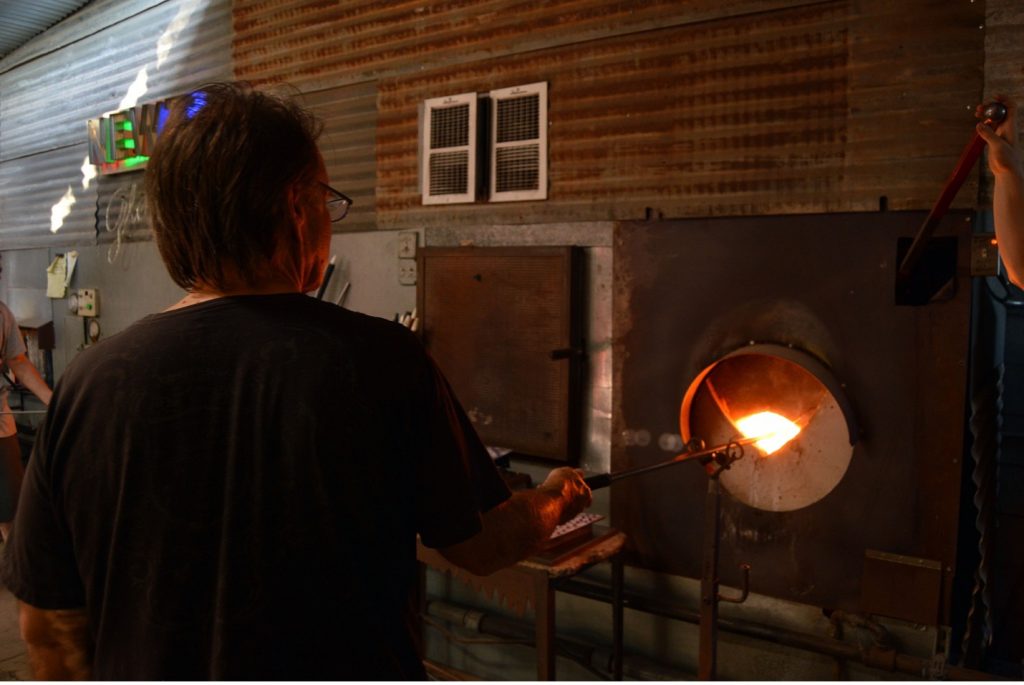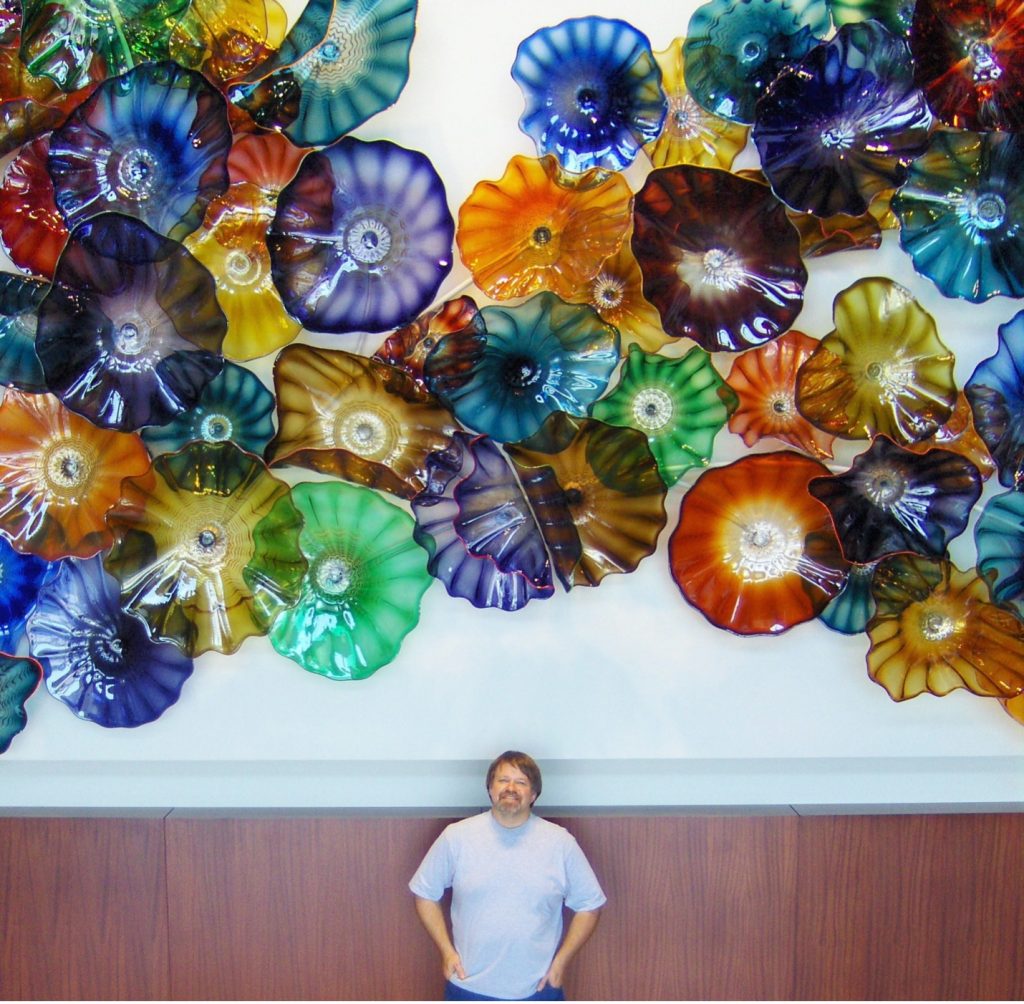Artists live to make art and being able to support themselves financially and emotionally with their art is a goal every artist should strive for. Artists around the world have a gift to share, but they can’t do that if they don’t make a living. It is important for young artists to understand that they are running a business (even if it might not feel like it) and you must take the necessary steps to ensure that the business runs properly. As the owner of my own custom glass art studio and a self-sustaining artist for over 30 years, I know what artists need to do to support themselves and run a successful art business. Here is some advice to help young artists learn their worth and make a living in this tough industry.
Obtain a basic business education
A successful artist should wear two hats. They should wear the hat of a creative, but also one of a business owner. Most artists have no problem wearing hat number one, but many of them neglect hat number two. Take some time to study how to run a business and obtain a basic business education. This does not mean you need a college degree you just need to understand the basic function of a business.
Understand what your costs are and how much time it takes to do work. Time and cost must always be at the top of your mind. Small and basic pieces cost less time or money to make but have more competition and may make less profit. A large custom piece might bring you more profit, but it is going to take more time and money upfront to build. You need to understand you are running a business even if it feels like you aren’t.

When you are working on a piece it is important to ask yourself what your cost are and map them out. What do your materials cost? What will shipping of materials or your art piece cost? Most young artists don’t have their own studio so you may need to rent out studio space. If you are a glass artist or work in a medium that requires high heat, you need to account for an expensive energy bill. All these factors need to be considered when it is time to set a price for your art.
It is important you learn how to make money as an artist. Understand your art is your business and find a way to support yourself off your art.

Find a mentor and eventually mentor others
Finding success in the art industry is a difficult thing to do. Artists put their heart and work on the line and they do so often for little money and acclaim. This industry is so hard to navigate, and you should not do it alone. Mentorship is a huge part of success in the art industry, and I would not be where I am today without having people I trusted mentor me in both art and business. You need people who can guide you through this industry and the general business world and help you grow. Mentorships don’t need to be some formal affair such as working with a famous artist in a studio. You can develop many informal relationships with artists in your community who will help you learn about the industry. As long as these people are helping you learn and grow then they are good mentors. Working with young artists has been a passion of mine for a long time and many of my best glass pieces would not be possible without the help of these talented young artists. Everyone young artist needs someone to hold them accountable and help them do art for a living. My mentors inspired me to be a better artist and they helped me make money in this industry so I could afford to share my gift with the world. They taught me that I could stay true to my artistic vision while not being a starving artist.
Find multiple mentors that are willing to guide you through this industry, they will make you a better artist and businessperson.

Always budget for emergencies and understand that cost and time are variable
Completing a complicated art project is one of the most fulfilling things an artist can do. However, accurately estimating the time and cost to complete said project often feels like an impossible task. The cost you estimate to complete a project is often less than the actual cost which is why you need to budget for emergencies. As a young artist, you are most likely not getting paid until you sell your piece and that could take up to a year for any large project. Start by doing smaller projects and save up your money to build an emergency budget. Any large project should be backed by three to six months of emergency savings in case the project goes over time and over budget.
Projects often take longer than you think to complete, and you often need to purchase more materials which with current inflation are often more expensive the second time you buy them. Cost and time are variable, and you must have money saved up to ensure you have the budget to combat these changes in completion time and material cost.

Don’t be afraid to walk away from projects
Admitting that you don’t have the resources to do a project is a difficult thing for an artist to do but being humble and knowing when you are stretched too thin will help you in the long run. Art can cost a lot of time and money. You are spending money on materials and trying to market your piece which can put you in the red until the day you sell it. Understand what you need to make money off a piece and if you can’t make a profit off it then it might be best to put that piece aside. As creative people many of us are willing to lose money on our art if it means people get some meaning or enjoyment out of our creation; however, making this sacrifice will hurt you in the long run. The reality is it is better to do nothing than sell a piece and lose money. Not walking away only serves to burn through your materials, budget, and energy.
Think long-term and know your limits. As you grow you will gain more success and opportunities to create bigger and better projects.
Don’t be afraid to market yourself and be good to your customers
You can’t be a successful artist without finding a customer base willing to buy your art. If you want more people exposed to your work, then it is important that you market yourself. Establish your artistic brand and market it appropriately. Self-promotion can be a hard thing for many artists to do, but it usually pays off. Be active on social media and seek out magazines and local newspapers to cover your work and tell your story. Don’t be afraid to share your work with galleries, small businesses, and other artists. A lot of work I have received is due to the network of local artists I am friends with who tell their customers about me. If you have the money to do so it isn’t a bad idea to invest in some internet marketing help so you can improve your engagement on social media or show up more prominently on Google.
When you find new customers do everything you can to treat them right. I have customers who have been with me for over a decade and every few years they reach out asking me to commission a new custom glass art. Your art is your gift to the world so don’t be afraid to share it.
Lastly, it is important that you always continue pushing the envelope with your art. Don’t allow people to stifle your creativity. You shouldn’t take jobs that burn all your money, but you also should not take jobs that don’t inspire you. Balance that creative fire you have for art with the acumen to run a business and you will be successful in this industry on your terms.
_________________________
Author’s Bio: Newt Grover is the owner of the Scottsdale Arizona art studio Newt Glass. Newt specializes in creating hand-blown glass chandeliers and custom glass art for people across the United State of America.


